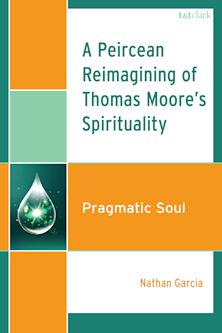Catholicism in the Eyes of The New York Times
The Epoch of Pope John Paul II
Catholicism in the Eyes of The New York Times
The Epoch of Pope John Paul II
This product is usually dispatched within 2-4 weeks
- Delivery and returns info
-
Flat rate of $10.00 for shipping anywhere in Australia
Description
Catholicism in the Eyes of The New York Times: The Epoch of Pope John Paul II serves as a comprehensive guide not only to Catholicism, but also to Times journalism during the epoch of Pope John Paul II. During Pope John Paul II's pontificate, 1978-2005, The New York Times produced thousands of articles-news items and features by staff reporters, special correspondents and wire services; documentary excerpts; commentaries, editorials, and letters to the editor; all enhanced by headlines, captions, charts, drawings, and photographs by Times personnel-that set forth the salient features of Catholic life during that time. While TheTimes treatment of Catholicism was immense, two stories dominated Catholic coverage: Pope John Paul II himself and the sexual abuse scandal of Catholic clergy. The first part of this book, “Karol Wojtyla's Pontificate,” explores the papacy of a man who was, without doubt, the central figure of Catholicism, as he set his evangelizing sights on defining the content of his church. The second part, “Sex Comes for the Archbishops,” spells out the contentions of the Church's sexual abuse scandal, which cast the Catholic Church and John Paul II's papacy in unwholesome shadows-at least as presented on the pages of The Times.
Table of Contents
Introduction: The Question of Journalism and Catholicism
Part I: Karol Wojtyla's Pontificate
Chapter 1: The Prelude of Pope Paul VI
Chapter 2: A Polish Pope, 1978-1979
Chapter 3: To Ireland, the United States and the World Beyond, 1979-1981
Chapter 4: Assassination Attempts in a World of Conflicts, 1981-1983
Chapter 5: Contest with Communism, 1983-1984
Chapter 6: Global Pastorate, Spiritual Worldview, 1984-1986
Chapter 7: Road Trips to the Americas, 1987
Chapter 8: Triumph, Moral Evangelization and Intimations of Mortality, 1988-1994
Chapter 9: A Superstar in His World Pilgrimage, 1995
Chapter 10: Autumnal Reflections, 1996-2000
Chapter 11: Unto Death, Through a Vale of Scandal, 2001-2005
Chapter 12: “A Pope of a Different Sort”
Part II: Sex Comes for the Archbishops
Chapter 13: A Revolution in Sexual Ethics
Chapter 14: Homosexuals in Catholic Moral Theology
Chapter 15: A Breaking Story
Chapter 16: “Scandals” and “Sensationalism”
Chapter 17: A Deluge
Chapter 18: Multiple Angles
Chapter 19: Victims, Parishioners, Prelates, and the Papacy
Chapter 20: Catholic Laity, Clerical Celibacy
Chapter 21: Decision-Making in Public
Chapter 22: “Annus Horribilis” for the Bishops
Chapter 23: Media Impacts
Chapter 24: Reports and Retorts
Conclusion
Product details
| Published | 15 Mar 2025 |
|---|---|
| Format | Hardback |
| Edition | 1st |
| Extent | 412 |
| ISBN | 9781666966411 |
| Imprint | Lexington Books |
| Dimensions | 229 x 152 mm |
| Publisher | Bloomsbury Publishing |
Reviews

ONLINE RESOURCES
Bloomsbury Collections
This book is available on Bloomsbury Collections where your library has access.


































